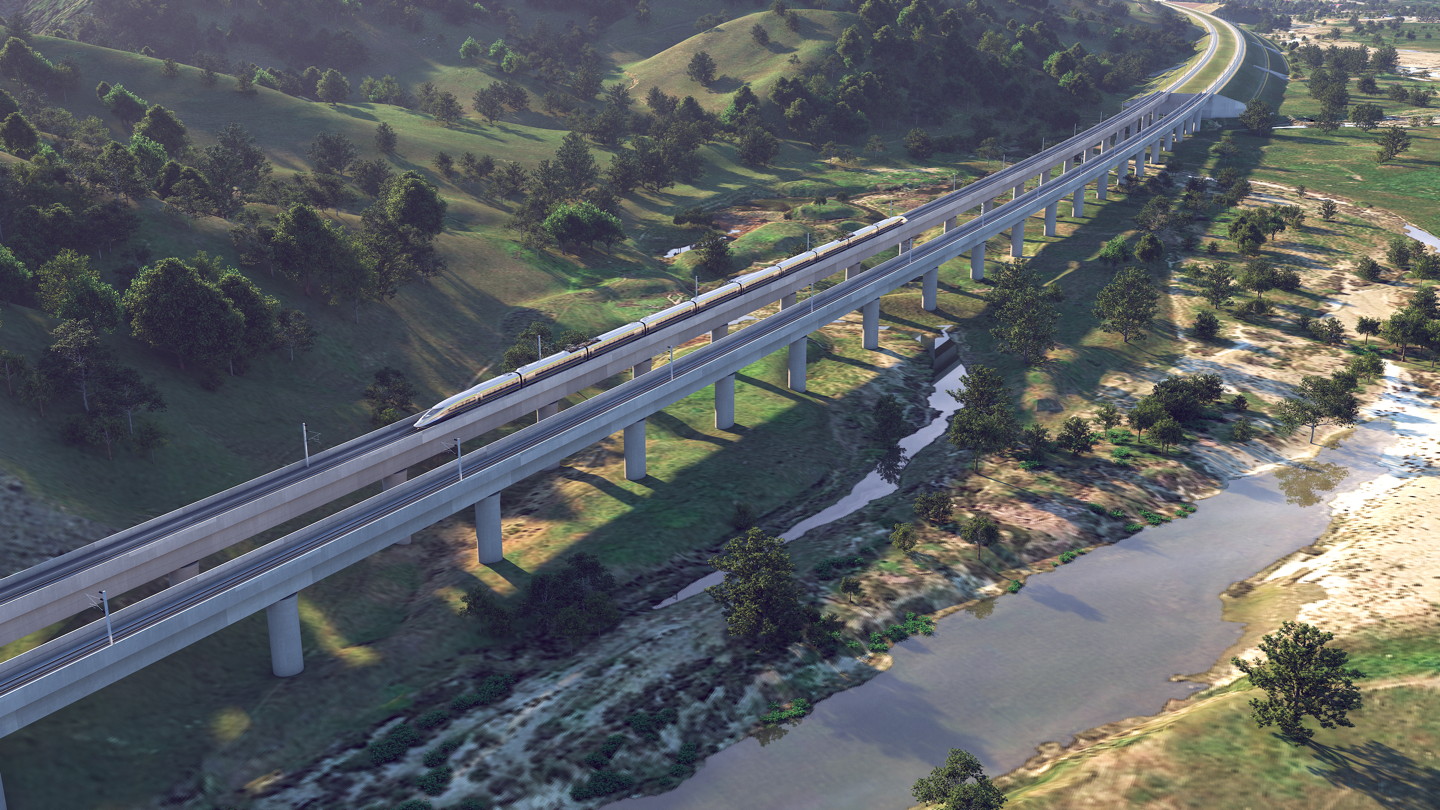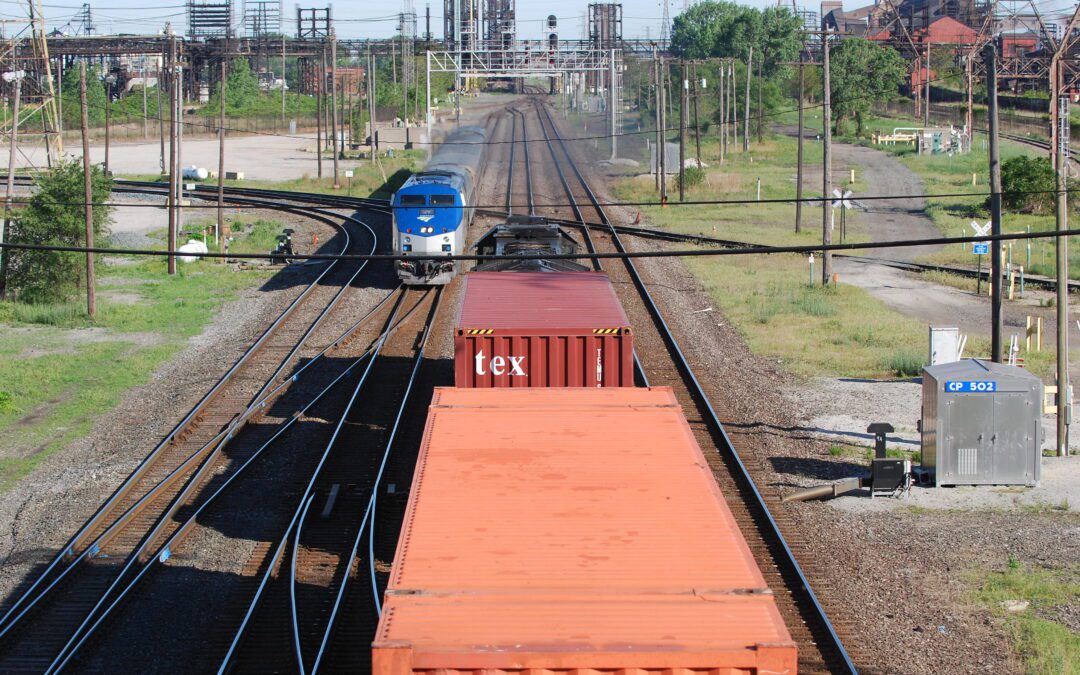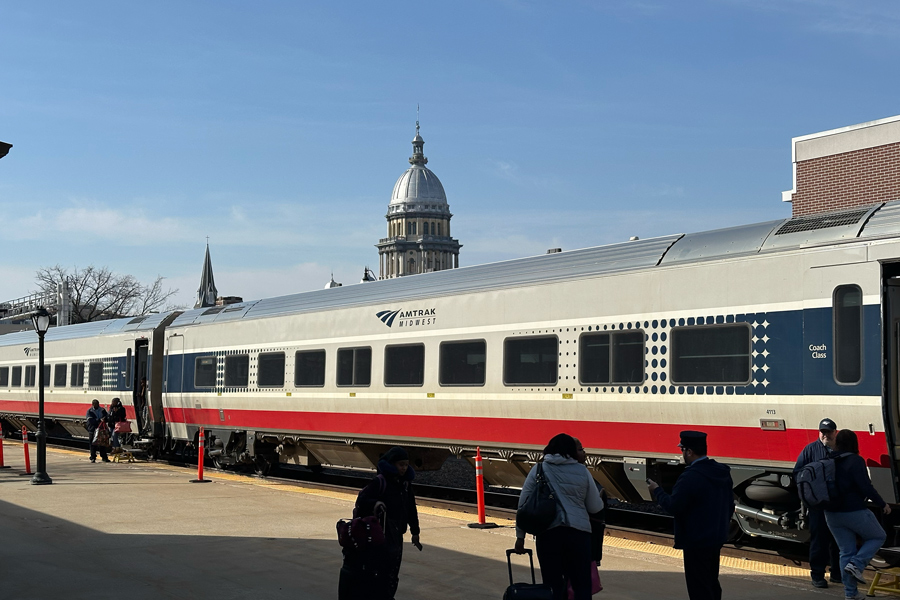Engineering Firm Chosen to Design Critical High-Speed Rail Segment in California HDR has been awarded a five-year contract to deliver engineering and design services for a 54-mile segment between Palmdale and Victorville. This is a critical connection between...
On Thursday, May 7, the California High Speed Rail Authority (CHSRA) presented data on the extent of the project’s economic impacts. The numbers underscore the urgent need for the U.S. Congress to adopt an ambitious, train-focused vision for national infrastructure investments. Sign the HSRA petition here.
CHSRA is now one major segment of electrified high-speed line (171 miles in the Central Valley) and contributing to the electrification of 51 miles in the Bay Area. Separately, a private company is planning a 130-mile line from southern California to Las Vegas.
In 2019, the CHSRA system created 7,500 job years, generated $600 million in labor income, and produced $1.6 billion in economic output. (Job years are year-long, full-time jobs supported by a project. Labor income includes all forms of employment—-both employee compensation and income earned by self-employed workers. Economic output measures the overall contribution to gross domestic product.)
Since its inception in 2006, the system’s planning and construction have supported up to 50,500 job years; generated up to $3.6 billion in labor income; and created up to $9.2 billion in economic output.
More than half of total spending on the project has benefited relatively disadvantaged towns and cities, and the investments have helped drive down unemployment in those communities. In Fresno, for example, the unemployment rate fell from 17 percent in 2010 to 7 percent in 2019.
Over the course of the entire CHSRA project, the phase 1 system—stretching from the Bay Area to L.A.—will create an estimated 624,000 job years. It will also generate $46 billion in labor income and $131 billion in economic output.
Investments in rail are especially vital right now, as the U.S. recovers from pandemic-induced mass unemployment and pivots to more economically and environmentally sustainable modes of transportation.
A 2018 report produced by the Congressional Research Service noted that infrastructure investments have decreased sharply since the mid-twentieth century. “Annual infrastructure investment by federal, state, and local governments peaked in the late 1930s, at about 4.2 percent of GDP, and since has fallen to about 1.5 percent of GDP in 2016,” according to the report.
That means we’re long overdue for huge investments in infrastructure. And, fortunately, those investments are particularly effective during economic downturns. “The impact could be about 1.5 times larger during a recession than during an expansion,” the report observed. “A 1 percent increase in public investment would boost economic output by 3.4 percent during a recession and about 2.3 percent during an expansion.”
So investing in infrastructure packs a powerful punch just when we need it most—a recession. And it’s an efficient tool for getting the economy back on track, “since investments in infrastructure start improving productivity soon after they are made, whereas other investments, like many in R&D, take much longer.”
What are we waiting for?
Read More:
The Economic Impact of California High-Speed Rail: Fact Sheet and Technical Support Document
The Latest from HSRA
Our Latest Blog Posts
Check out the latest news, updates, and high speed rail insights from our blog!




